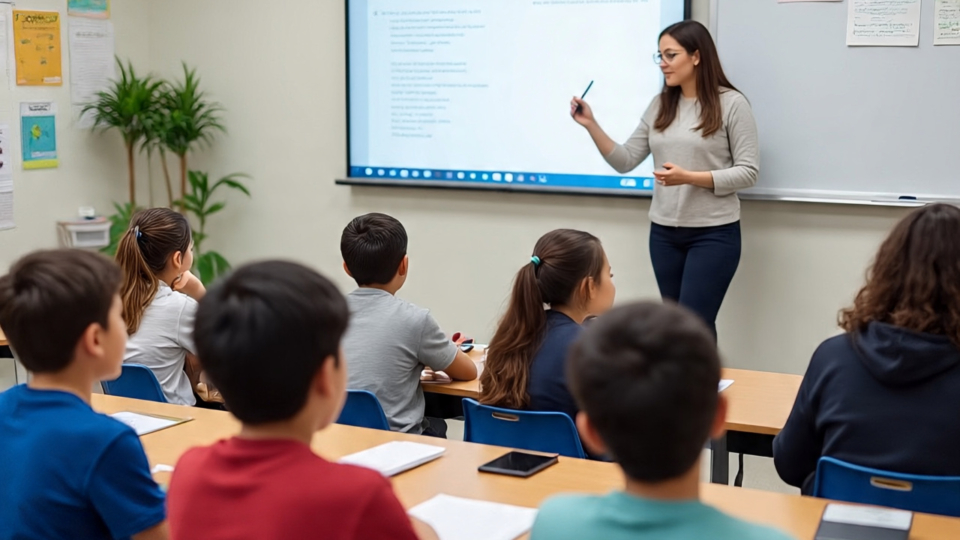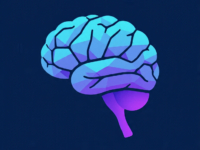
Education + AI: Case Studies from Real Schools 🏫
Imagine a classroom where every student receives personalized attention, where teachers are freed from tedious administrative tasks, and where learning materials adapt instantly to individual needs. This isn’t a futuristic dream; it’s becoming a reality thanks to the integration of Artificial Intelligence (AI) in education. Across the globe, real schools are embracing AI to revolutionize teaching and learning, from smart tutoring systems to automated grading. Let’s dive into some fascinating case studies that show how AI is transforming the educational landscape.
Introduction: The AI Revolution in Classrooms 🤖
The rapid advancement of Artificial Intelligence has sparked a profound transformation across various sectors, and education is no exception. Far from being a mere buzzword, AI is actively being implemented in schools worldwide, offering innovative solutions to long-standing challenges. From enhancing personalized learning experiences to streamlining administrative burdens, the impact of Education + AI is becoming increasingly evident. This article explores compelling case studies from real schools, illustrating the practical applications, benefits, and challenges of integrating AI into the learning environment. Get ready to discover how AI is empowering educators and learners alike, paving the way for a more efficient, engaging, and equitable educational future.
Background and Context: Why AI in Schools?
For centuries, education has largely followed a traditional model: a teacher delivers information to a group of students. While effective for many, this model often struggles to address the diverse learning styles, paces, and needs of individual students. This is where AI steps in. The core idea behind integrating AI into education is to leverage its capabilities for personalization, automation, and data analysis.
Historically, teachers have been overwhelmed with large class sizes, mountains of grading, and the constant pressure to differentiate instruction. AI offers a powerful set of tools to alleviate these burdens. Early applications of AI in education included intelligent tutoring systems and adaptive learning platforms, which aimed to mimic human tutors and tailor content. However, with breakthroughs in natural language processing (NLP) and machine learning, AI’s potential in schools has expanded dramatically. Today, AI can assist with everything from creating lesson plans and generating assessments to providing instant feedback and even detecting learning disabilities. The goal is not to replace human educators but to augment their abilities, allowing them to focus more on mentorship, critical thinking, and fostering creativity.
Detailed Comparison: AI in Action – Real School Examples
Let’s look at some real-world examples of how schools are implementing AI, showcasing different approaches and benefits.
| School/Platform | AI Application | Key Benefits |
| Westville School District, Illinois (USA) | AI-powered Chatbot (student-created) | Students learned AI by creating a chatbot for simple classroom tasks (e.g., reminding students to line up, basic instructions). Increased student engagement and excitement about learning. |
| Berlitz Language School (Global) | Azure AI Speech Technology | Uses AI for pronunciation assessment in language learning. Improved student experience with speech practice, greater accessibility for diverse learners, reduced product development costs. |
| Ho Chi Minh City University of Technology and Education (Vietnam) | ChatGPT Integration | Students use ChatGPT for learning, information searches, idea generation, and assignment completion. Enhances accessibility and efficiency in learning. |
| Brainly (Online Learning Platform) | Google Cloud Vision AI | Students can photograph questions and receive instant answers. 70% student satisfaction, 6x engagement boost with photo queries, democratized access to help. |
| MagicSchool.ai (Global platform) | AI for Teacher Support | Generates lesson plans, assignments, IEPs, study guides, rubrics, and personalized feedback. Saves teachers time, combats burnout, elevates teaching. |
| Dysolve (AI Tool) | Dyslexia Detection | Analyzes reading patterns and errors to detect dyslexia early. Provides tailored support and interventions. |
These case studies illustrate a diverse range of AI applications in education. From student-led projects that foster AI literacy to sophisticated platforms enhancing language acquisition and administrative efficiency, AI is proving to be a versatile tool. The common thread is how AI augments existing educational practices, making them more personalized, efficient, and engaging.
Key Features / Benefits of Education + AI
The integration of AI in education brings a multitude of powerful features and benefits:
- Personalized Learning Paths: AI algorithms can analyze a student’s performance, learning style, and pace to create customized learning experiences. This means content, difficulty, and even teaching methods can adapt in real-time to suit individual needs, ensuring no student is left behind or held back.
- Automated Administrative Tasks: Teachers spend significant time on tasks like grading, attendance tracking, and scheduling. AI-powered tools can automate these repetitive duties, freeing up educators to focus on more impactful activities like teaching, mentoring, and direct student interaction.
- Intelligent Tutoring Systems: AI can provide immediate, one-on-one support to students, answering questions, offering explanations, and providing targeted practice. These systems can work 24/7, providing assistance whenever and wherever a student needs it.
- Enhanced Feedback and Assessment: AI can provide instant, detailed feedback on assignments, from multiple-choice quizzes to essays. This real-time insight helps students understand their mistakes quickly and improve, while also giving teachers valuable data on class performance.
- Early Intervention and Support: By analyzing student data, AI can identify patterns indicating a student might be struggling or at risk of falling behind. This allows educators to intervene early with targeted support, preventing academic difficulties from escalating.
- Content Creation and Customization: AI tools can help teachers generate diverse learning materials, including lesson plans, quizzes, summaries, and even creative prompts, tailored to specific learning objectives and student demographics.
- Accessibility Features: AI-driven tools, such as speech-to-text, text-to-speech, and language translation, make education more accessible for students with disabilities or those from diverse linguistic backgrounds.
Pros and Cons of AI in Schools
While the potential of AI in education is immense, it’s crucial to consider both its advantages and disadvantages.
Pros:
- Increased Efficiency: Automates routine tasks, saving time for teachers and administrators.
- Personalized Learning: Tailors content and pace to individual student needs, leading to better engagement and outcomes.
- Enhanced Accessibility: Provides tools for students with diverse learning needs or disabilities.
- Data-Driven Insights: Offers valuable analytics on student performance, helping educators make informed decisions.
- 24/7 Support: Intelligent tutoring systems and chatbots can provide help anytime, anywhere.
- Consistency and Objectivity: AI can grade and assess with greater consistency and less human bias (though bias in training data is a concern).
- Fosters Innovation: Encourages new teaching methodologies and empowers students to engage with cutting-edge technology.
Cons:
- Data Privacy Concerns: AI systems often collect vast amounts of student data, raising questions about privacy, security, and potential misuse.
- Algorithmic Bias: If trained on biased data, AI can perpetuate or even amplify existing inequalities and stereotypes.
- Lack of Human Connection: Over-reliance on AI might reduce essential human interaction between students and teachers, hindering social-emotional development.
- Cost and Accessibility Gaps: Implementing advanced AI solutions can be expensive, potentially widening the digital divide between well-funded and under-resourced schools.
- Teacher Training and Resistance: Educators need proper training to effectively integrate AI; some may resist due to job displacement fears or a lack of understanding.
- Over-reliance and Reduced Critical Thinking: Students might become overly dependent on AI for answers, potentially hindering their independent problem-solving and critical thinking skills.
- Ethical Dilemmas: Questions arise about accountability for AI-driven decisions (e.g., grades, recommendations) and the transparency of AI algorithms (“black box” problem).
Use Cases / Who Should Use It
The applications of Education + AI span the entire educational ecosystem:
- Students:
- Personalized learning platforms: For adaptive exercises, targeted practice, and customized content.
- Intelligent tutors/chatbots: For homework help, concept clarification, and immediate feedback.
- Language learning apps: For pronunciation practice and conversational skills.
- Assistive technologies: For students with learning disabilities or other special needs.
- Teachers:
- Lesson planning tools: To generate ideas, create outlines, and develop engaging activities.
- Automated grading systems: For objective and consistent evaluation of assignments.
- Assessment creation: To generate quizzes, rubrics, and personalized feedback.
- Data analytics dashboards: To monitor student progress, identify learning gaps, and inform instructional strategies.
- Content summarization: To quickly digest long articles or research papers for classroom use.
- School Administrators:
- Timetabling and scheduling: To optimize complex schedules for students, teachers, and resources.
- Enrollment and admissions management: To streamline application processes and predict enrollment trends.
- Automated compliance reporting: To generate necessary reports quickly and accurately.
- Resource allocation and financial planning: To make data-driven decisions about budgets and resource distribution.
- Campus security: For monitoring and anomaly detection.
- Parents:
- Communication platforms: AI-powered tools can facilitate better communication with teachers, providing updates on student progress and activities.
- Personalized progress reports: Understanding their child’s strengths and weaknesses through AI-driven insights.
In essence, anyone involved in the learning and teaching process can benefit from AI, provided it’s implemented thoughtfully and ethically.
FAQs about Education + AI
Q1: Will AI replace teachers in schools?
A1: No, the general consensus among educators and AI developers is that AI will not replace teachers. Instead, AI is a powerful tool designed to augment human teachers, automating repetitive tasks and providing data-driven insights so educators can focus more on mentorship, critical thinking development, and addressing students’ emotional and social needs.
Q2: How does AI personalize learning for students?
A2: AI personalizes learning by analyzing a student’s past performance, learning style, strengths, weaknesses, and pace. It then uses this data to adapt the content, difficulty level, and even the type of exercises presented, ensuring that each student receives instruction tailored to their individual needs, much like a private tutor.
Q3: What are the main ethical concerns with using AI in education?
A3: Key ethical concerns include data privacy and security (how student data is collected and protected), algorithmic bias (if AI is trained on skewed data, it can perpetuate inequalities), lack of transparency (the “black box” problem where AI decisions are unclear), and the potential for over-reliance leading to decreased critical thinking skills.
Q4: Can AI help students with learning disabilities?
A4: Absolutely! AI-powered assistive technologies can be incredibly beneficial for students with learning disabilities. Examples include speech-to-text software for those with writing difficulties, text-to-speech readers for dyslexic students, and AI that can detect early signs of specific learning challenges, allowing for timely interventions.
Q5: Is AI in education only for technologically advanced schools?
A5: While advanced AI integration might require more resources, many AI tools are becoming increasingly accessible and user-friendly, even for schools with limited tech infrastructure. Platforms like MagicSchool.ai offer intuitive interfaces that teachers can use with minimal technical expertise, demonstrating that AI’s benefits are reaching a broader range of educational settings.
Conclusion: The Path Forward for Education + AI
The case studies and discussions above paint a clear picture: Education + AI is no longer a distant concept but a powerful reality transforming classrooms across the globe. From enhancing personalized learning experiences and streamlining administrative tasks to providing instant feedback and aiding in special education, AI offers unprecedented opportunities to improve educational outcomes and alleviate burdens on educators.
While challenges such as data privacy, algorithmic bias, and equitable access remain, the benefits of thoughtfully implemented AI far outweigh the risks. The key lies in strategic integration, continuous teacher training, and a focus on ethical guidelines that prioritize student well-being and academic integrity. AI shouldn’t replace the invaluable human element of teaching but rather serve as an intelligent assistant, empowering teachers to be more effective and students to be more engaged.
Final Verdict: Embrace the Intelligent Classroom 💡
The evidence is compelling: schools that strategically adopt AI in education are witnessing tangible improvements in efficiency, personalization, and student engagement. It’s not about letting machines take over, but about harnessing their power to create a more dynamic, responsive, and equitable learning environment for everyone. For any educational institution looking to stay relevant, enhance learning outcomes, and prepare students for an AI-driven future, embracing this technology is not just an option, it’s a necessity. The intelligent classroom is here, and it promises a brighter future for education.



















Leave a Reply